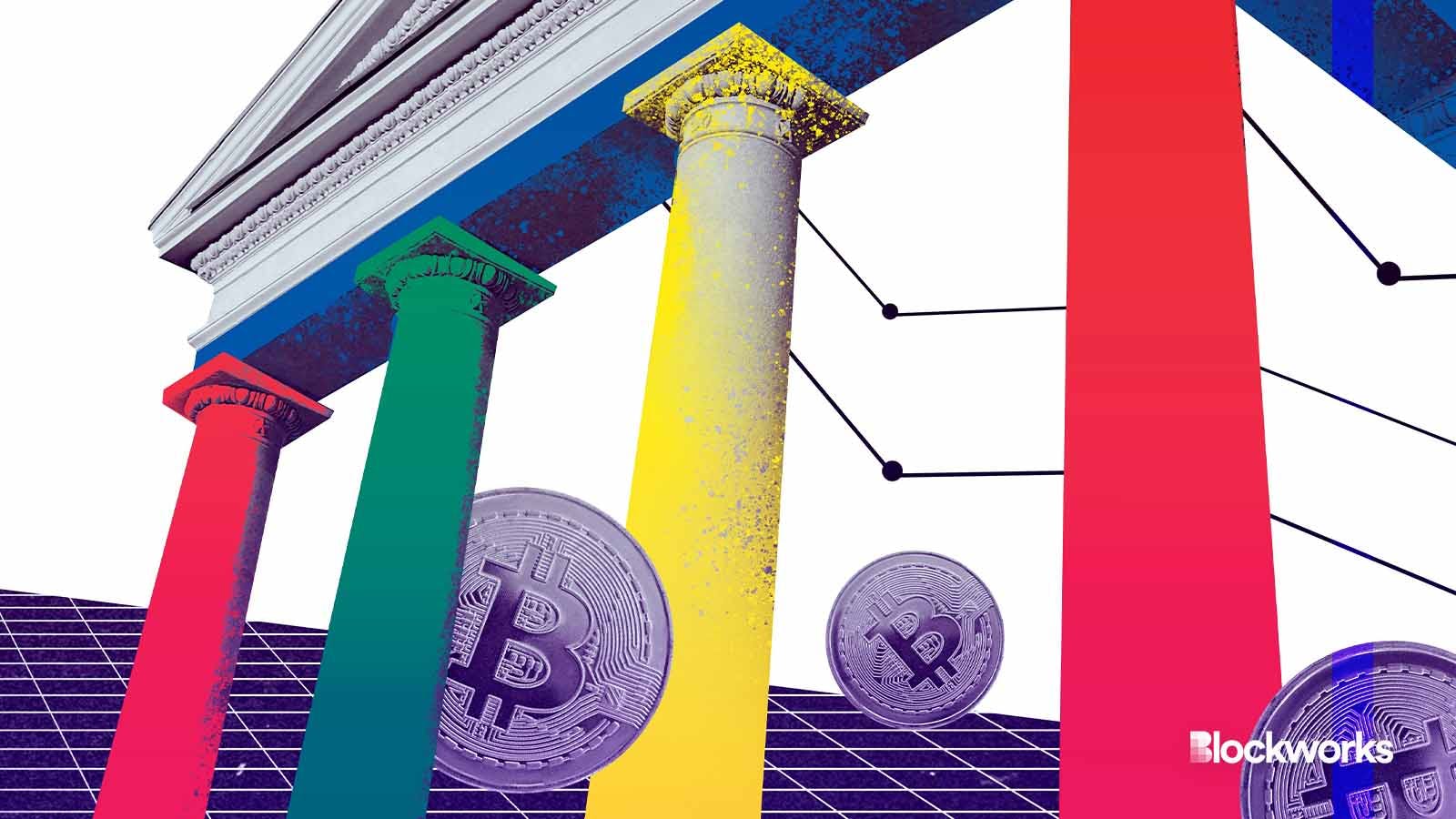The history of Bitcoin halvings — and why this time might look different
For the first time ever, Bitcoin’s halving comes right after a new all-time high

Master1305/Shutterstock modified by Blockworks
Historically, every Bitcoin halving — a disinflationary mechanism inscribed in the currency’s code by Satoshi Nakamoto — has come a year or two before a new all-time high.
This is partly because a halving cuts the block reward paid to miners in half, reducing the number of new bitcoin being created and theoretically making bitcoin more scarce.
For example, with the latest halving to come, the block reward will fall from 6.25 bitcoin (BTC) to 3.125 BTC.
The three previous Bitcoin halvings occurred in the run-up to an all-time high, which then gave way to a price drawdown — until the next halving helped ignite another rally, according to some market observers.
Read more: The next Bitcoin halving is coming. Here’s what you need to know.
But the upcoming halving has broken that trend. For the first time in its history, bitcoin set an all-time price high in the immediate run-up to the halving when it topped $70,000 this month.
Blockworks examined how bitcoin’s price responded to prior halvings. Here’s what we found.
November 28, 2012: 50 BTC to 25 BTC
Nearly four years after Bitcoin’s genesis block was mined, the network underwent its first halving.
Bitcoin’s nascent community was unsure whether the supply slow-down would drive prices up, or if the halving was already priced in, as a then-teenaged Vitalik Buterin laid out in Bitcoin Magazine at the time. Bitcoiners gathered at meet-ups around the globe to ring in the halving.
Bitcoin, which had been trading for around $12 in the lead-up to the first halving in November 2012, jumped to $229 by April 2013, then climbed to roughly $1,132 by the following November, according to TradingView.

In the wake of the collapse of the Japan-based exchange Mt. Gox, bitcoin’s price would toil away in the hundreds of dollars range for the next three years.
July 9, 2016: 25 BTC to 12.5 BTC
By 2016, a host of new cryptocurrencies had cropped up. Shortly after the second halving, Ethereum would undergo a hard fork in the wake of the catastrophic DAO hack.
Bitcoiners remained split on how the second halving would affect bitcoin’s price. “Right now, I’m disappointed,” a user wrote on the BitcoinTalk forum a few hours before the block reward was cut in half.
Read more: How the halving could impact bitcoin’s price
Bitcoin’s price gradually rose for a few months after the second halving before picking up momentum in May 2017. By December 2017, bitcoin hit a new high of roughly $19,188, a market event that came a year and a half after the halving.

May 11, 2020: 12.5 BTC to 6.25 BTC
By the third halving, Bitcoin was more than a decade old and had become more of a known commodity.
“Hey guys I think bitcoin is halving today, not sure if you’ve heard,” a new crypto exchange founder named Sam Bankman-Fried tweeted. The markets publication of TD Ameritrade published a piece wondering whether the halving was already priced in.
Once again, it wasn’t.
Bitcoin’s price rose from around $8,500 at the May 2020 halving to over $40,000 by January 2021. Bitcoin topped $63,000 in April before peaking above $67,000 in November 2021, nine years after the first halving.

April 2024: 6.25 BTC to 3.125 BTC
It seems like a fool’s errand to question whether the next Bitcoin halving will lead to a price run at this point, but the circumstances are noticeably different this time around.
When the decade-long fight for the Securities and Exchange Commission’s approval on spot bitcoin ETFs resolved in January, bitcoin embarked on an ongoing bull run to an all-time high above $73,000.
This is uncharted territory for halvings, which previously came with bitcoin’s price far below its prior peak.
Get the news in your inbox. Explore Blockworks newsletters:
- The Breakdown: Decoding crypto and the markets. Daily.
- 0xResearch: Alpha in your inbox. Think like an analyst.






